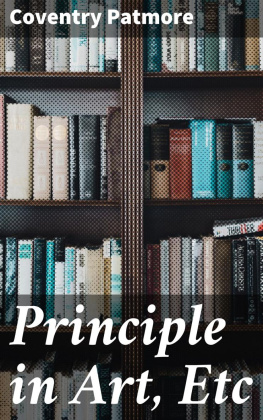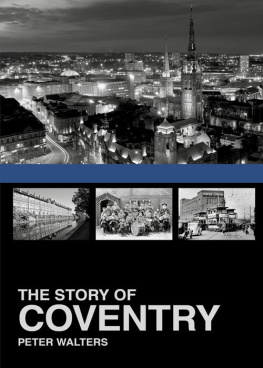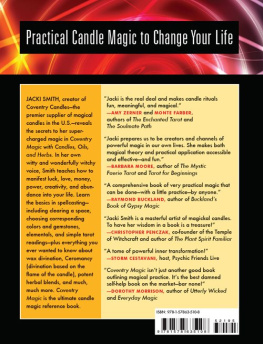PREFACE
Table of Contents
With one exception, namely the last Paper in the Collection, which appeared in the Fortnightly Review, all these Essays were printed in the St. Jamess Gazette during the editorship of Mr. Greenwood. The Essay on Architectural Styles contains a summary of principles which I stated, some thirty years ago, in various Articles, chiefly in the Edinburgh Review. As this Essay now stands, I hope that readers, who have knowledge enough to enable them to judge, will find in it an example of the kind of criticism which I have advocated earlier in the volume.
COVENTRY PATMORE.
I
PRINCIPLE IN ART
Table of Contents
It is not true, though it has so often been asserted, that criticism is of no use or of little use to art. This notion prevails so widely only becauseamong us at leastcriticism has not been criticism. To criticise is to judge; to judge requires judicial qualification; and this is quite a different thing from a natural sensitiveness to beauty, however much that sensitiveness may have become heightened by converse with refined and beautiful objects of nature and works of art. Criticism, which has been the outcome only of such sensitiveness and such converse, may be, and often isdelightful reading, and is naturally far more popular than criticism which is truly judicial. The pseudo-criticism, of which we have had such floods during the past half-century, delights by sympathy with, and perhaps expansion of, our own sensations; true criticism appeals to the intellect, and rebukes the reader as often as it does the artist for his ignorance and his mistakes. Such criticism may not be able to produce good art; but bad art collapses at the contact of its breath, as the steam in the cylinder of an engine collapses on each admission of the spray of cold water; and thus, although good criticism cannot produce art, it removes endless hindrances to its production, and tends to provide art with its chief motive-power, a public prepared to acknowledge it. The enunciation of a single principle has sometimes, almost at a blow, revolutionised not only the technical practice of an art, but the popular taste with regard to it. Strawberry Hill Gothic vanished like a nightmare when Pugin for the first time authoritatively asserted and proved that architectural decoration could never properly be an addition to constructive features, but only a fashioning of them. The truth was manifest at once to amateur as well as to architect; and this one principle proves to have contained a power even of popular culture far greater than all the splendid sympathetic criticism which followed during the next fifty years. And it has done nothing but good, whereas the latter kind of writing, together with much good, has done much harm. Pugins insight did not enable him to discover the almost equally clear and simple principle which governs the special form of decoration that properly characterises each of the great styles of architecture. Therefore, while his law of constructional decoration compelled all succeeding critics to keep within its bounds, they were still free to give the rein to mere fancy as to the nature of the decoration itself; and this has been becoming worse and worse in proportion as critics and architects of genius, but of no principle, have departed from the dry tradition of decorative form which prevailed in Pugins day, and which finds its orthodox expression in Parkers Glossary and the elementary works of Bloxam and Rickman. Sensitiveness or natural taste, apart from principle, is, in art, what love is apart from truth in morals. The stronger it is, the further it is likely to go wrong. Nothing can be more tenderly felt than a school of painting which is now much in favour; but, for want of knowledge and masculine principle, it has come to delight in representing ugliness and corruption in place of health and beauty. Venus or Hebe becomes, in its hands, nothing but a Dame aux Camlias in the last stage of moral and physical deterioration. A few infallible and, when once uttered, self-evident principles would at once put a stop to this sort of representation among artists; and the public would soon learn to be repelled by what now most attracts them, being thenceforward guided by a critical conscience, which is the condition of good taste.
There is little that is conclusive or fruitful in any of the criticism of the present day. The very name that it has chosen, sthetics, contains an implied admission of its lack of virility or principle. We do not think of Lessings Laocon, which is one of the finest pieces of critical writing in the world, as belonging to sthetics; and, like it, the critical sayings of Goethe and Coleridge seem to appertain to a science deserving a nobler namea science in which truth stands first and feeling second, and of which the conclusions are demonstrable and irreversible. A critic of the present day, in attempting to describe the difference between the usual construction of a passage by Fletcher and one by Shakespeare, would beat helplessly about the bush, telling us many things about the different sorts of feelings awakened by the one and by the other, and concluding, and desiring to conclude, nothing. Coleridge in a single sentence defines the difference, and establishes Shakespeares immeasurable superiority with the clearness and finality of a mathematical statement; and the delight of the reader of Shakespeare is for ever heightened because it is less than before a zeal without knowledge.
There already exists, in the writings and sayings of Aristotle, Hegel, Lessing, Goethe, and others, the greater part of the materials necessary for the formation of a body of Institutes of Art which would supersede and extinguish nearly all the desultory chatter which now passes for criticism, and which would go far to form a true and abiding popular tasteone which could render some reason for its likings and dislikings. The man, however, who could put such materials together and add such as are wanting does not live; or at any rate he is not known. Hegel might have done it, had his artistic perception been as fine and strong as his intellect; which would then have expressed its conclusions without the mist of obscurity in which, for nearly all readers, they are at present shrouded. In the meantime it would be well if the professed critic would remember that criticism is not the expression, however picturesque and glowing, of the faith that is in him, but the rendering of sound and intelligible reasons for that faith.
II
REAL APPREHENSION
Table of Contents
Man, says Dr. Newman, is not a reasoning animal; he is a seeing, feeling, contemplating, acting animal. To see rightly is the first of human qualities; right feeling and right acting are usually its consequences. There are two ways of seeing: one is to comprehend, which is to see all round a thing, or to embrace it; one is to apprehend, which is to see it in part, or to take hold of it. A thing may be really taken hold of which is much too big for embracing. Real apprehension implies reality in that which is apprehended. You cannot take hold of that which is nothing. The notional grasp which some people seem to have of clouds and mares nests is a totally different thing from real apprehension; though what this difference is could scarcely be made clear to those who have no experience of the latter. A man may not be able to convey to another his real apprehension of a thing; but there will be something in his general character and way of discoursing which will convince you, if you too are a man acquainted with realities, that he has truly got hold of what he professes to have got hold of, and you will be wary of denying what he affirms. The man of real apprehensions, or the truly sensible man, has no opinions. Many things may be dubious to him; but if he is compelled to act without knowledge, he does so promptly, being prompt to discern which of the doubtful ways before him is the least questionable, on the ground of such evidence as he has. As to what he sees to be true or right, he does not argue with the person who differs from him upon a vital point, but only avoids his company, or, if he be of an irascible temperament, feels inclined to knock him down. Of course there are some people who see things which do not exist; but this is lunacy, and beyond the scope of these remarks. Real apprehension is emphatically the quality which constitutes good sense. Common good sense has a real apprehension of innumerable things which those who add to good sense learning and reflection may comprehend; but there is much that must for ever remain matter only of real apprehension to the best seers; that is to say, everything in which the infinite has a part,












